This collection consists of short (2-5 minute) introductory videos on neuro-ophthalmological condition pathophysiology, diagnosis and treatment modalities by Dr. Andrew Lee.
Andrew G. Lee, MD, Professor of Ophthalmology, Weill Cornell Medicine; Chairman, Department of Ophthalmology, The Methodist Hospital, Houston, TX; Adjunct Professor of Ophthalmology, Baylor College of Medicine; Adjunct Professor of Ophthalmology, University of Iowa Hospitals and Clinics and the University of Buffalo; Clinical Professor of Ophthalmology, Department of Ophthalmology and Visual Sciences, University of Texas Medical Branch at Galveston; UT MD Anderson Cancer Center; and Texas A and M College of Medicine.
NOVEL: https://novel.utah.edu/
TO
Filters: Collection: ehsl_novel_lee
| Title | Description | Subject | ||
|---|---|---|---|---|
| 101 |
 |
Toxic Optic Neuropathy | Dr. Lee lectures medical students on toxic optic neuropathy. | Toxicity; Neuropathy; Pallor |
| 102 |
 |
Transient Vision Loss - Monocular vs Binocular | Dr. Lee lectures medical students on the subject of transient vision loss. | Monocular Vision Loss; TBL; TMVL; Binocular Vision Loss; Amaurosis Fugax |
| 103 |
 |
Vascular Malformations | Dr. Lee lectures medical students on the subject of vascular malformations. | Capillary Telangiectasia; Developmental Venous Anomaly (DVA); Cavernous Malformation; Arteriovenous Malformation |
| 104 |
 |
Vascular Malformations in Neuro-Ophthalmology | Dr. Lee lectures medical students on vascular malformations in neuro-ophthalmology. | Vascular Malformations; Hemangioma; Telangiectasia |
| 105 |
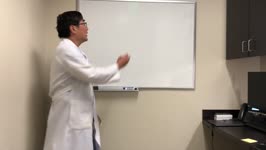 |
VI-XII Syndrome | Dr. Lee lectures medical students on the subject of VI/VII syndrome. | VI/XII; Clivus; Gottfredson; Tongue |
| 106 |
 |
Wallerian Degeneration | Dr. Lee lectures medical students on Wallerian degeneration. | Ophthalmology; Neuroanatomy; Wallerian Degeneration |
| 107 |
 |
Nonartertic Anterior Ischemic Optic Neuropathy (NAION) | Dr. Lee lectures on nonarteritic anterior ischemic optic neuropathy. | Pathology; Ischemic/Strokes; Giant-Cell Arteritis; Neuroanatomy |
| 108 |
 |
CABG Related Vision Loss | Dr. Lee lectures medical students on the subject of CABG related vision loss. | CABG; Ischemic Optic Neuropathy; Post-operative |
| 109 |
 |
Charles Bonnet Syndrome in the Hemianopic Field | Summary: • Charles Bonnet syndrome o Visual formed hallucinations (often of little people) o Other key features > Vision loss > Insight into the unreal nature of the phenomena > No auditory component • If auditory component exists: o Patient awake, alert, and oriented? o Causes can include: > De... | Charles Bonnet Syndrome; Hallucinations; Visual Loss; Neurodegenerative Disorders |
| 110 |
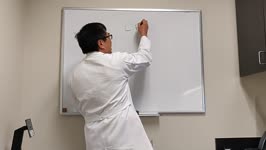 |
Craniopharyngioma | Summary: • Craniopharyngioma o Cranio = head o Pharyngioma = pharynx • Two embryologic origins o Posterior pituitary -Neuroectoderm origin (diencephalon) -Projecting down ("stalactite") o Anterior pituitary -Surface ectoderm origin (pharynx) -Projecting up ("stalagmite") o Rathke's cleft -Betwee... | Craniopharyngioma; Mass; Suprasellar; Sella; Bitemporal Field Loss |
| 111 |
 |
Dominant Optic Atrophy | Dr. Lee lectures medical students on dominant optic atrophy. | DOA; OPA1; Pseudo-glaucomatous Cupping; Central Scotoma; Cecocentral Scotoma; ADOA Plus |
| 112 |
 |
Foster-Kennedy Syndrome | Dr. Lee lectures medical students on the subject of Foster-Kennedy syndrome. | Foster-Kennedy Syndrome; Optic Atrophy; Papilledema |
| 113 |
 |
Fulminant IIH (06-26-20) | Dr. Lee lectures medical students on the subject of fulminant IIH on June 26, 2020. | Idiopathic Intracranial Hypertension (IIH); Pseudotumor; Lumbar Drain |
| 114 |
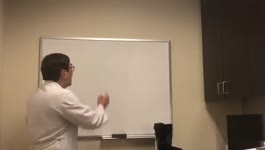 |
Fulminant IIH (09-13-20) | Dr. Lee lectures medical students on the subject of fulminant IIH on September 13, 2020. | Idiopathic Intracranial Hypertension (IIH); Pseudotumor; Lumbar Drain |
| 115 |
 |
Giant Cell Arteritis (GCA) Unusual Presentations | Dr. Lee lectures medical students on giant cell arteritis (GCA). | Arteritis; Neuropathy; Vasculitis |
| 116 |
 |
Hallucinogen Persistent Perception Disorder | Summary: 1. Hallucinogen persistent perception disorder a. disorder precipitated by the use of prior hallucinogens b. causes persistent positive visual disturbance similar to the person's first experience with the hallucinogen c. can't be attributed to active drug use or any other neurologic or psyc... | Hallucinations |
| 117 |
 |
Idiopathic Intracranial Hypertension (IIH) | Today I'm going to be talking to you a little bit about IIH, which is idiopathic intracranial hypertension and the key part of idiopathic intracranial hypertension is that has to be idiopathic. And, there are videos already on IIH so we're not going to be covering that ground. What I want to tell yo... | Anatomy; Pathology; Intracranial Pressure; ICP; Idiopathic Intracranial Hypertension; Behcet; Lupus; SLE; Systemic Lupus Erythematosus; Cancer |
| 118 |
 |
Juxtaposed Visual Field Defects | Summary: • Homonymous hemianopsia -easy to identify when it's either on right or left side -lesion is behind chiasm because it's homonymous hemianopsia -therefore, lesion is on contralateral side from the homonymous field defect • 2 homonymous hemianopsias juxtaposed together o Occurs with bilat... | Homonymous; Hemianopsia; Scotoma |
| 119 |
 |
Leber Hereditary Optic Neuropathy | Summary: • Leber Hereditary Optic Neuropathy: mitochondrially inherited o Does not manifest at birth, typically presents in young adult male patient o Unclear why males more affected than females who also inherit maternal mitochondrial deletion -Possible exogenous factors i.e. Nuclear cofactor, ho... | Mitochondrial; Genetic; Neuropathy |
| 120 |
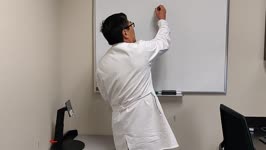 |
Neurocysticercosis | Summary: • Neurocysticercosis is a big problem worldwide o It is a common cause of new onset seizure in young people from endemic areas (i.e. El Salvador or Mexico) • Key imaging finding is a cystic lesion which represents the scolex of the worm • The organism responsible for this condition if... | Neurocysticercosis; Infection; Seizure; Imaging |
| 121 |
 |
Refractive Shift in Neuro-Ophthalmology | Summary: • Refraction o Myopia - light beam focuses in front of the retina o eye is too long o myopic shift - lens thickens o Hyperopia - light beam focuses behind the retina o eye is too short o hyperopic shift - retina pushed forward • Change in lens - Myopic Shift o Diabetes o hyperglycemia d... | Refractive; Lens; Transient; Hyperopia; Myopia |
| 122 |
 |
Retinal Migraine | Dr. Lee lectures a class of medical students on the subject of retinal migraine. | Migraine; Retina; Vasospasm |
| 123 |
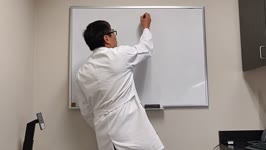 |
Steroids in Neuro-Ophthalmology | Summary: • Better to refer to steroids as glucocorticoids o Clarifies that we are not using mineralocorticoid effects of steroid o Reminds one of the glucocorticoid-specific side effects • Most common indication for glucocorticoids in neuro-op: giant cell arteritis o Will either use: -Intravenou... | Steroids; Glucocorticoids; Indications |
| 124 |
 |
Syphilis Serologies | Dr. Lee lectures medical students on the subject of syphilis serologies. | Syphilis; Serologies; Treponemal; Non-treponemal; Neurosyphilis |
| 125 |
 |
When Is It Not NAION | Summary: • What is NAION? o Symptoms > Acute unilateral decreased visual acuity/visual field > RAPD in involved eye > Disc edema followed by sector atrophy > Small cup-to-disc ratio in fellow eye o Risk Factors > Elderly patient • Most common acute optic neuropathy in older patients > Vasculopat... | NAION |
